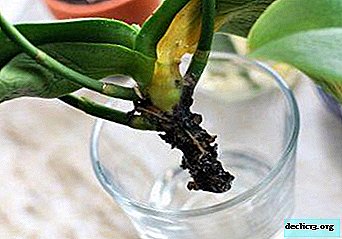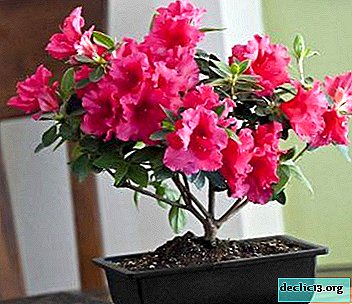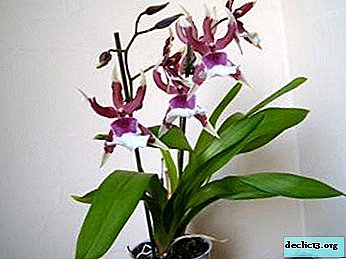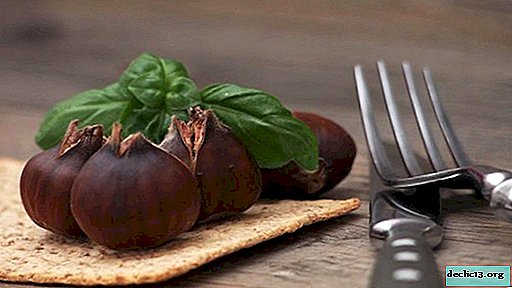Features of propagation of Kalanchoe: when to conduct, in what ways and how to root a new flower?
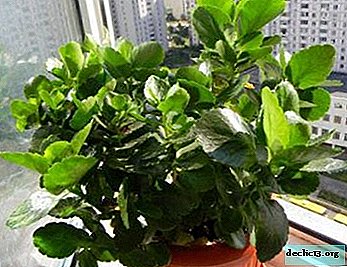
When beauty and benefits are ideally combined in one plant, then, naturally, it quickly becomes demanded and popular.
One of these plants is Kalanchoe.
The flower is really unique - it blooms (mainly in winter) with colorful hats so that sometimes even the leaves are imperceptible, incredibly useful due to its healing juice.
And to grow it is very simple, it is undemanding in care. We will tell you how a flowering plant propagates.
What kind of flower is this?
This wonderful plant belongs to succulents., it has a thick green stalk (can lignify with time), fleshy succulent leaves. Almost all of its species bloom beautifully. Originally Kalanchoe from the tropics, it was first discovered in Madagascar, then quickly spread throughout Europe due to its unique healing properties.
Especially popular now in home floriculture specifically for the therapeutic use of Kalanchoe Degremon and Kalanchoe Peristoe. Indeed, for the vast majority of us, Kalanchoe is a real “home doctor”, he successfully treats his nose, throat with his juice, heals wounds, cuts and much more. Kalanchoe is also very fond of cosmetologists, its juice perfectly regenerates the skin.
When does it breed?
Reference! Kalanchoe multiplies quite easily, and in various ways - by “children” on leaves, seeds, cuttings, etc.In some ways, you can successfully propagate the plant all year round, and in some at a certain time. For example, it is best to start propagation by cuttings after flowering has ended (when the plant is pruned) or after forming pruning. The start of propagation by seeds will be most effective in early spring.
Training
 Wonderful that There are several options for breeding Kalanchoe, you can choose the most convenient for yourself.
Wonderful that There are several options for breeding Kalanchoe, you can choose the most convenient for yourself.
If the goal is to get a large number of new plants, then, of course, the best way is to sow seeds.
And if you just need to propagate for yourself and get several young copies, then it is best to plant "kids" or root cuttings.
Let's take a closer look at how Kalanchoe propagates.
Ways
Cuttings
In this way, all types of plants propagate, the best time for the procedure is spring. Cuttings easily root both in water and in the soil (take equally universal soil for indoor plants and sand). To get a stalk, you need:
- cut off a part of a branch or stem about 6-8 cm long with 2 or 3 pairs of leaves, cut off the lower ones;
- then we leave the chopped cuttings just soak in the air so that the slices dry;
- then we plant them in pots (5 - 7 cm in diameter) so that the lower leaves lie directly on the ground;
- water and put on the window (not in the sun).
Leaf
Can be propagated throughout the year. Plant the cut sheet into a moist, fertile soil and cover with a jar or glass from above. Very soon, a new plant will begin to form - literally on gases.
You can not even use the whole leaf, but parts of the leaf - in this case, a new young plant will also quickly grow from each part, or you can cut nothing from the bush at all - Kalanchoe can be successfully propagated with old fallen leaves, they very quickly give roots in the water.
Seeds
it the best breeding method for obtaining a large number of seedlings:
- first you need to prepare the soil (be sure to add sand), do not forget to put a layer of drainage on the bottom of the pot;
- sow seeds in moist soil - simply spread out on the surface and can be slightly pressed down with a spoon or finger;
- then cover the container with seeds with a film and put on the windowsill (where it is warm);
- regularly ventilate and prevent the soil from drying out.
Seed germination is always good, they quickly and actively begin to germinate and form, as soon as the seedlings grow a little, they will need to be peaked (weak sprouts should be removed right away), and after 2 to 3 weeks you can already plant each plant in its own separate pot.
Kids
 An amazing way, however, it is possible only for the "live-bearing" Kalanchoe - Cirrus and Degremon. "Kids" (miniature sockets) they form along the edges of the leaves. They immediately form not only leaflets, but also the root system, that is, they are immediately ready for planting.
An amazing way, however, it is possible only for the "live-bearing" Kalanchoe - Cirrus and Degremon. "Kids" (miniature sockets) they form along the edges of the leaves. They immediately form not only leaflets, but also the root system, that is, they are immediately ready for planting.
Once such “children” just fall to the ground, they immediately turn into independent plants and begin to grow rapidly, but the whole problem is that there are too many of them and they begin to interfere with each other's development, so they need to be carefully removed from under bush and plant in separate pots. Of course, it is not necessary to wait until the "kids" show up on the ground, but you can break it off carefully from the sheet and put it in a separate container.
Offspring
To use this method of propagation, the plant must be healthy and adult. After flowering, pinch the tops of all the stems, thereby providing an incentive for the formation of new young shoots next to the mother bush.
After some time, when this young tribe grows to about one third of the growth of the mother bush, they must be carefully separated (without damaging the roots) and planted in separate pots.
Axillary kidneys
It’s also an interesting method, but it’s possible to apply it not for all species, for example, Kalanchoe paniculata leaves bloom after flowering, and in the place where they grew, such miniature cabbage cabbage appear - these are new buds. Under natural conditions, these buds fall to the ground (from their own gravity) and are easily rooted.
Well, at home, you don’t have to wait for this moment at all, you need to carefully cut them and plant them in light soil (sand must be part of the soil). After about a week, roots form, and after 3 weeks you can plant it in a permanent place in the pots.
Reference! If there is a need to propagate flowering Kalanchoe, then this can also be done in different ways, but the most suitable: cuttings or seeds. It will be right to do it in the spring.If you propagate by cuttings.
- You can use both stem and leaf stalk.
- Daytime temperatures should be between 20-24 degrees, and nighttime temperatures between 20-18 degrees.
- There should be a lot of light, but not bright sunlight.
- Only intact healthy material can be taken for propagation.
 If propagated by seeds.
If propagated by seeds.
- Sow the seeds in a sterilized and well-moistened soil.
- Gently squeeze the seeds into the ground and do not fall asleep; put a bag or glass on top.
- Provide sunlight (diffused).
- Temperature is not lower than 22 degrees.
- Ventilate daily.
Now you know how to propagate flowering Kalanchoe.
How to root?
- It is necessary to prepare the correct soil, it must be loose and pass water and oxygen well, it is very good if perlite, sand or coconut fiber is in the composition.
- At the bottom of the pot (it is best to take unglazed clay) pour a good layer of drainage, you can fill it with a third of the pot.
- Further, the rooting process itself is similar in all species and varieties - both flowering and non-flowering Kalanchoe. We root the leaf (leaf or stem) in the prepared light soil (we slightly deepen the leaf stem into the soil, and deepen the stem stem by about 4 - 6 cm) and wait for new plants.
Further care
So that after planting, the Kalanchoe flower perfectly develops and grows healthy, you need to provide him with proper care at home:
- maintain a moderate temperature, the minimum should not fall below 8 degrees;
- watering will need to be about once a month;
- lighting should be bright, but direct sunlight is possible only in the morning or in the evening, not in the afternoon;
- carefully inspect for pests and treat the plant in a timely manner if they suddenly show up.
Conclusion
As a result, we can conclude that The Kalanchoe breeding process is an activity for your pleasure, because it proceeds easily and simply. After meeting this wonderful plant, I certainly want to immediately have the same.
Some of us, when we call it Kalanchoe, associate with the bitter taste of its juice, these are childhood memories when our parents treated us for a cold. So, if you still do not have this plant, be sure to get it.

